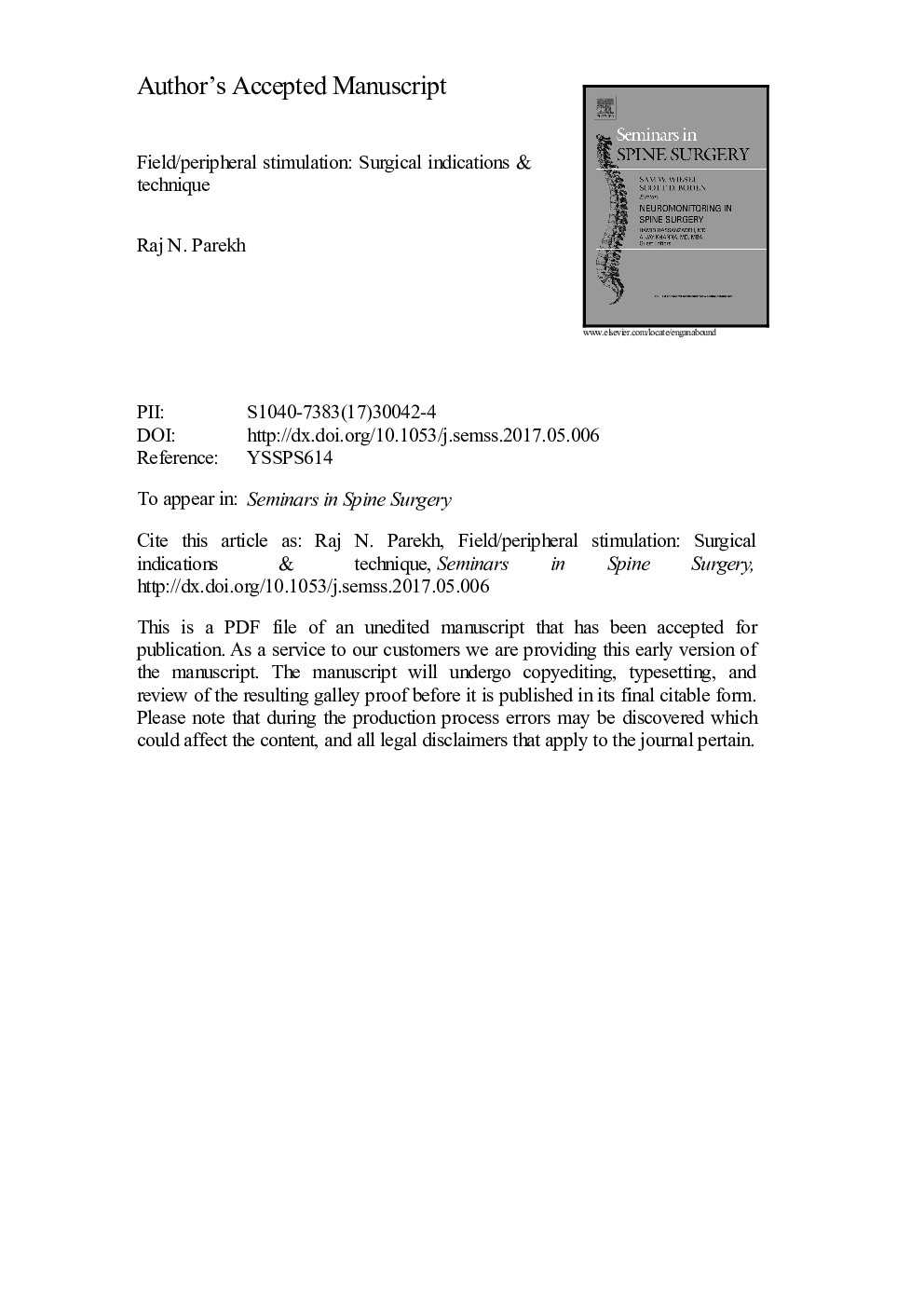| Article ID | Journal | Published Year | Pages | File Type |
|---|---|---|---|---|
| 5712459 | Seminars in Spine Surgery | 2017 | 5 Pages |
Abstract
Peripheral stimulation, similar to spinal cord stimulation, is a form of neuromodulation that aims to treat chronic pain by directly targeting peripheral nerves, and thus altering peripheral pain pathways leading to pain relief. Implantation is performed within two stages. The first stage, or trial phase, is performed under local anesthesia and attempts to identify the appropriate peripheral nerve causing pain. The second stage, performed under general anesthesia, involves placement of an internal battery/generator for the implanted electrode. Indications for peripheral stimulation includes the following: migraine, occipital neuralgia, cluster headache, neuropathic facial pain, complex regional pain syndrome, and chronic lower back pain.
Related Topics
Health Sciences
Medicine and Dentistry
Orthopedics, Sports Medicine and Rehabilitation
Authors
Raj N. MD,
